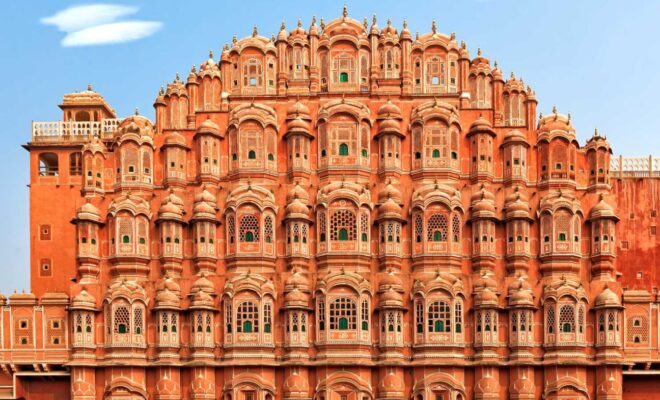7 interesting facts confirm India’s stunning ‘Hawa Mahal’ was ahead of its time

The western Indian state of Rajasthan is home to thousands of palaces and forts, with each monument flaunting its own history and unique architectural practices. But there has been one entity known for its design and elegance.
It’s the famous ‘Hawa Mahal’ in the capital, Jaipur – also called the Paris of India or the Pink City, owing to the dominant colour scheme of its buildings. Built by Rajput Sawai Pratap Singh in 1799, the palace is today one of India’s most recognisable icons.
Hawa Mahal is a popular tourist attraction. According to Indian authorities in charge of it, the monument attracts around 1 million visitors from far and wide each year. It’s built from red and pink sandstone, and has a unique blend of Mughal and Rajasthani styles of architecture.
Here are seven interesting facts that give the palace its own pleasant vibe!
1. Shaped Like A Crown
Rajput Sawai Pratap Singh was known to be a great devotee of Lord Krishna. Consequently, Hawa Mahal got the shape of a crown – or particularly Lord Krishna’s crown.
2. Palace Of Winds
‘Hawa Mahal’ is conveniently translated into ‘Palace of Winds’ or the ‘Wind Palace’. The structure features 953 beautiful small windows or ‘jharokhas’ – built to keep the wind blowing inside.
Did you know Hawa Mahal used to be a popular summer retreat for numerous Rajput families in the golden old times?
3. Built For The Royal Ladies
The palace was built as a separate complex for the royal women – with the idea being allowing the ladies to watch the daily life of Jaipur conveniently through the windows.
4. Looks Like A Bee Hive
The facade of Hawa Mahal is structured like a honeycomb. The intricately designed jharokas allowed the royal ladies to watch the happenings in the city, without being visible to the public.
5. No Front Entrance
Since Hawa Mahal was constructed as part of the City Palace, it doesn’t have a direct entrance. Visitors need to enter from the side of the City Palace.
6. Zero Stairs
Although the building has five floors, there are no stairs to climb. Tourists wanting to reach the top floors have to rely on ramps.
7. Named After The Fifth Floor
Hawa Mahal got its name from Hawa Mandir – or the fifth and final floor. The floor, being the topmost level, guaranteed the best wind in the city.
Also Read:- Jaipur’s Hotel Rambagh Palace Comes Under Top 10 Hotels In The World



